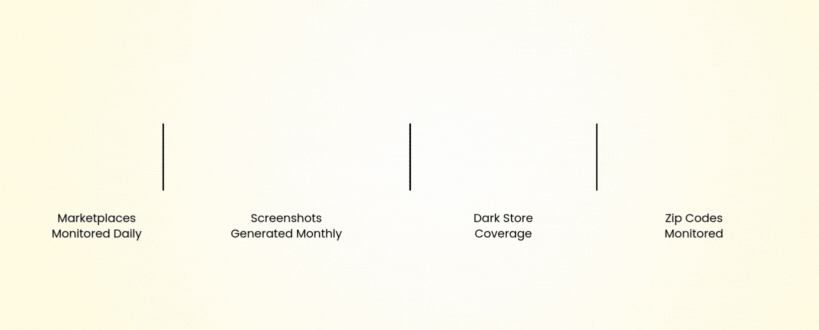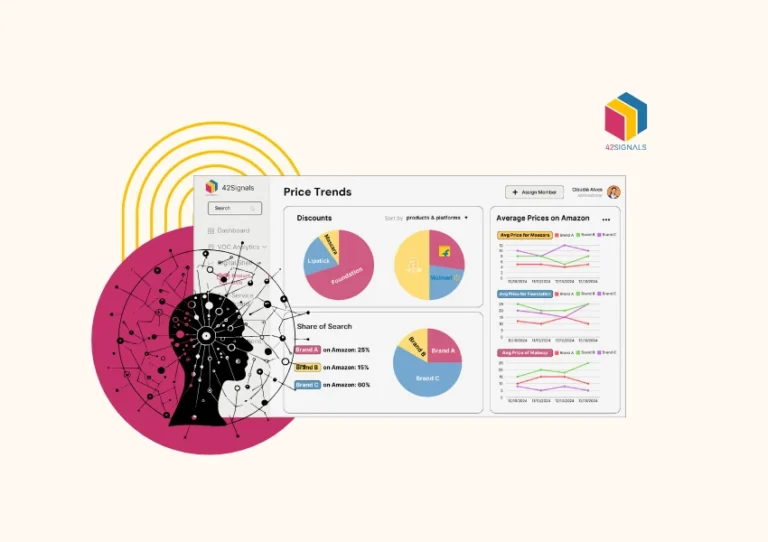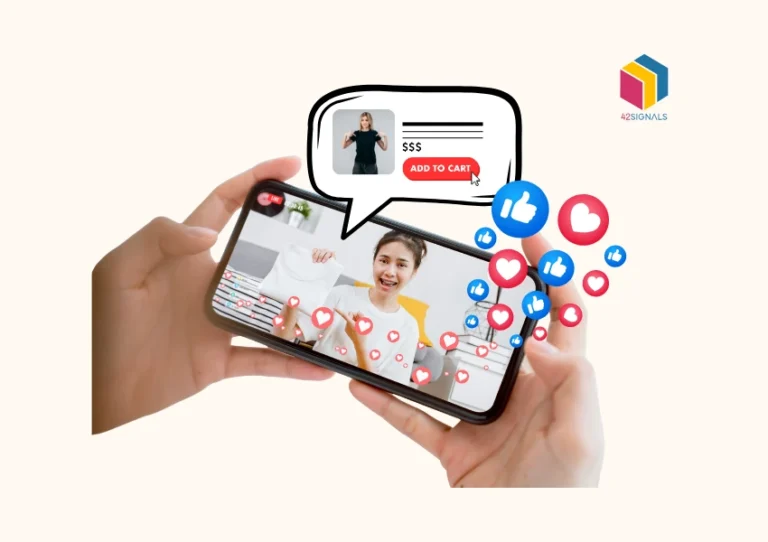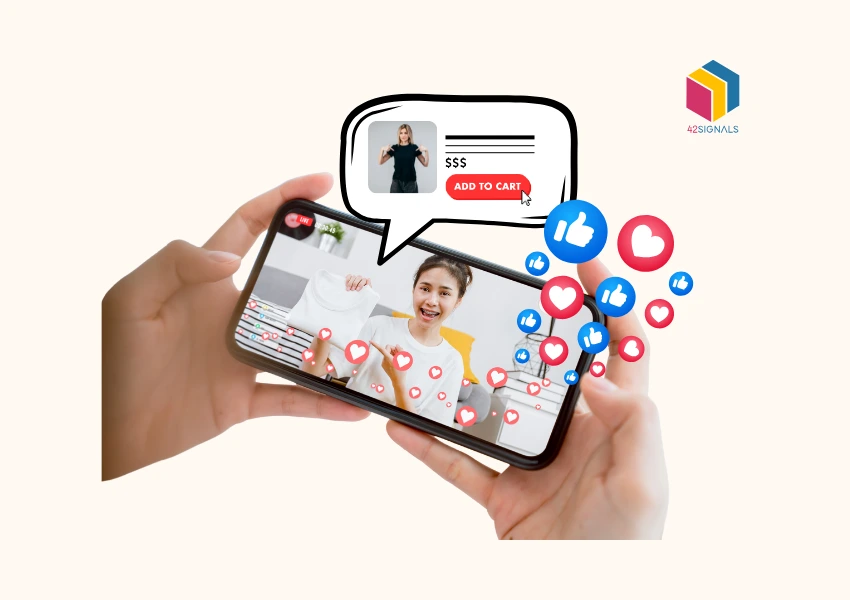Let’s get real: Most product listings are digital ghosts. They’re buried on page 5 of search results, ignored by shoppers and forgotten by algorithms. But here’s the kicker—your product could be one tweak away from dominating marketplace traffic growth. The difference between invisibility and explosion? Understanding search visibility secrets.
Here’s the unpolished playbook to hack Amazon’s algorithm, crush competitors, and turn your listings into traffic magnets.
Why 99% of Sellers Fail at Search Visibility

Image Source: Moz
Amazon’s search results are a battlefield. If you’re not on page 1, you’re losing. Consider this:
- Products on page 1 get 95% of clicks.
- A single keyword can drive a 300% sales spike.
- Shoppers spend under 10 seconds scanning a listing before bouncing.
Most sellers fail because they treat product listings like online obituaries—static, boring, and forgettable.
The winners? They weaponize keyword dashboards, obsess over digital shelf optimization, and treat every pixel as a sales pitch. Let’s fix your listings.
Bulletproof Your Keyword Strategy with a Keyword Dashboard
A keyword dashboard isn’t a nice-to-have—it’s your cheat sheet to Amazon’s algorithm. Tools like 42Signals let you:

- Track real-time keyword ranking for your products and competitors.
- Uncover high-volume, low-competition phrases (e.g., “dermatologist-approved moisturizer” vs. “face cream”).
- Spot seasonal trends (e.g., “gift baskets” spikes in November).
How to Use It Like a Pro:
- Steal competitors’ top keywords: Use the dashboard to reverse-engineer their ranking secrets.
Example: A pet brand found a rival ranking for “hypoallergenic cat bed” but missing “for sensitive skin.” They claimed the phrase and saw a 50% CTR boost.
Run a “gap analysis” weekly. Filter competitors’ top-performing keywords with <10% keyword difficulty scores. Tools like Ahrefs can automate this.
- Kill zombie keywords: Prune terms with <10 monthly searches. Replace them with buyer-intent phrases like “buy,” “best,” or “under $50.” Use keyword tools like 42Signals to explore long-tail keywords. Explore these high-intent variations to ensure the best mix of keywords for the product description.
- A/B test everything: Run two versions of your title (e.g., one with “organic” vs. “all-natural”) for 7 days. Let the dashboard pick the winner. A supplement brand tested “vegan collagen” vs. “plant-based collagen.” The latter increased conversions by 22% because it aligned with trending Google searches.
Optimize Product Pages Like a Conversion Psychologist
Product page optimization isn’t about stuffing keywords—it’s about manipulating shopper psychology. Here’s how:
A. Titles That Trigger Clicks
- Bad: “Wireless Bluetooth Headphones Noise Canceling.”
- Brutal: “Studio-Quality Wireless Headphones – 40H Playtime, 1000+ 5-Star Reviews (2024 Model).”
- Why it works – It answers “What’s in it for me?” Shoppers care about outcomes, not features. “Studio-Quality” implies superior sound; “40H Playtime” solves battery anxiety.
- Social Proof: “1000+ 5-Star Reviews” reassure skeptics—it’s the digital equivalent of a friend’s recommendation.
- Urgency & Novelty: Adding “2024 Model” signals freshness, while “Back-to-School Bestseller” taps into FOMO.
B. Bullet Points That Sell Dreams, Not Specs
- Bad: “Durable stainless steel construction.”
- Brutal: “Survived 243 Lab Tests – Spill Coffee, Drop It, Crush It… It Won’t Quit (2-Year Warranty Included).”
- Why it works
- Tells a Story: “243 Lab Tests” creates a narrative of relentless testing. Shoppers imagine scientists torturing the product—and it survives.
- Erases Objections: The warranty reassures risk-averse buyers.
- Why it works
The PASTOR Framework in Action:
- Problem: “Tired of flimsy lunchboxes that leak soup?”
- Amplify: “Imagine ruined work clothes, wasted meals, and $100+ in replacements.”
- Solution: “Our leak-proof stainless steel lunchbox seals tighter than a submarine hatch.”
- Testimonials: “‘Saved my bacon—literally!’ – Sarah, Mom of 3”
- Offer: “2-Year Warranty + Free Recipe eBook ($15 Value).”
- Response: “Click ‘Add to Cart’ before 3 PM for same-day shipping.”
C. Images That Scream “Buy Me”
Bad: Sterile white background shots that look like a police lineup.
Brutal: Lifestyle shots (e.g., a hiker using your backpack) + infographics (“30% Lighter Than Competitors”).
Why It Works:
- Lifestyle Shots = Instant Aspiration: Shoppers don’t buy backpacks—they buy the idea of adventure. A photo of a muddy boot next to your product screams “outdoor credibility.”
- Infographics Beat Spec Sheets: “30% Lighter” is a fact; “Carry 10 lbs. More Gear Without Back Pain” is a benefit.
Pro Tactics:
- The “Zoom-In” Rule:
- First image: Hero shot (product in use).
- Second image: Close-up of a unique feature (e.g., reinforced zippers).
- Third image: Social proof (customer unboxing or UGC photo).
- Annotate Like a YouTuber:
Add text overlays like:
- “Holds 15” Laptop + 2 Water Bottles” (for backpacks).
- “Fits in 98% of Car Cup Holders” (for tumblers).
Case Study:
A yoga mat brand replaced generic images with a split-screen photo:
- Left: A woman struggling with a cheap mat that wrinkles.
- Right: Her smiling, mid-pose on their non-slip mat.
- Result: 43% sales increase in 3 weeks.
Dominate the Digital Shelf (Where 80% of Sales Happen)
Digital shelf optimization is the art of making your product irresistible at first glance. Tools like 42Signals help you:

- Benchmark your content against top 3 competitors.
- Flag missing keywords, blurry images, or weak bullet points.
- Track how changes impact marketplace traffic growth.
Action Plan:
- Fix the “Blink Test”: Can shoppers grasp your product’s value in 3 seconds? If not, redesign.
- Hijack Competitor Weaknesses: If rivals have crappy Q&A sections, answer every question and add answers to your bullets.
- Use Video to Crush Bounce Rates: Products with videos convert 3.5x faster. Show your product solving a problem (e.g., a stain-resistant shirt surviving a coffee spill).
Pro Tip:
Run a monthly “shelf audit.” If your product looks like a 2005 eBay listing next to competitors, you’re losing.
Fuel Marketplace Traffic Growth with Guerrilla Tactics
Traffic isn’t just about Amazon SEO—it’s about hijacking shoppers everywhere they lurk.
A. Amazon Attribution
Amazon Attribution isn’t just a tracking tool—it’s a crystal ball showing how your off-Amazon ads (Facebook, Google, TikTok) actually drive sales. Here’s the brutal truth: 90% of brands waste money on “brand awareness” campaigns that don’t move the needle. With Attribution, you’ll see exactly which ads convert so you can slash what flops and double down on what works.
B. “Trojan Horse” Keywords
Bidding on competitors’ brand names in Sponsored Ads is the ecommerce equivalent of slashing their tires… if slashing tires were allowed. Amazon permits it, and winners exploit it.
Example: A supplement brand bid on “Brand X Probiotics” and stole 15% of their traffic with a “2x Strength” claim.
Avoid trademarked terms in ad copy. You can bid on “Nike Shoes,” but your headline can’t say “Nike.” Instead, say, “Like Nike, But Half the Price.”
C. Leverage Social Proof
Embed “Bestseller” or “Amazon’s Choice” badges in off-site ads. Shoppers trust Amazon’s labels more than your logo.
1. Earn Badges:
- Amazon’s Choice: Requires high sales velocity, low returns, and keyword relevance. Obsess over these metrics.
- Bestseller: Win a subcategory (e.g., “#1 in Cat Toys”) by running lightning deals or coupons during slow sales periods.
2. Flaunt Badges Everywhere:
- Embed in Off-Site Ads: Use your “Amazon’s Choice” badge in Facebook ads. Shoppers will click just for the validation.
- Print on Packaging: Add “5000+ 5-Star Reviews on Amazon” to product boxes. Screenshot and feature it in listings.
Case Study:
A toy brand used TikTok unboxing videos (tagged with their Amazon URL) to drive traffic. Sales exploded by 200% during the holidays.
The 3 Deadly Sins of Search Visibility
- Ignoring Mobile: 80% of Amazon shoppers use phones. If your images look pixelated or the text is microscopic, you’re dead.
- Keyword Cannibalism: Targeting the same keyword across multiple products? The algorithm will bury all but one.
- Forgetting Reviews: Negative reviews tank rankings. Use tools like FeedbackFive to automate review requests.
With tools getting smarter, there’s much that they can do. Some tools like Semrush predict rising keywords (e.g., “solar eclipse glasses” before April 2024). Coupled with voice search optimization, targeting phrases like “Alexa, find affordable running shoes” with conversational keywords helps with discoverability.
Optimizing for visual search is also important where shoppers upload photos to find similar products.
Final Word: Stop Chasing, Start Controlling
By mastering product page optimization, weaponizing keyword dashboards, and obsessing over digital shelf optimization. You’re equipped to deal with the changing dynamics of online selling.
As a first step, pick your worst-performing product. Redesign one image, rewrite one bullet point, and steal one competitor keyword.
42Signals can help ecommerce businesses with such data. Here’s how we help a brand like yours –
- Understand the right set of keywords that are performing or underperforming and find long-tail keywords that can bring more views.
- Looking at competitor strategies and optimizing product data and other aspects for improved visibility and sales.
- Learning about market conditions and category performance across platforms to know what’s working, what isn’t, and the changes that may improve marketing strategies.
Sign up for a free trial to see the platform in action for your brand and products.






